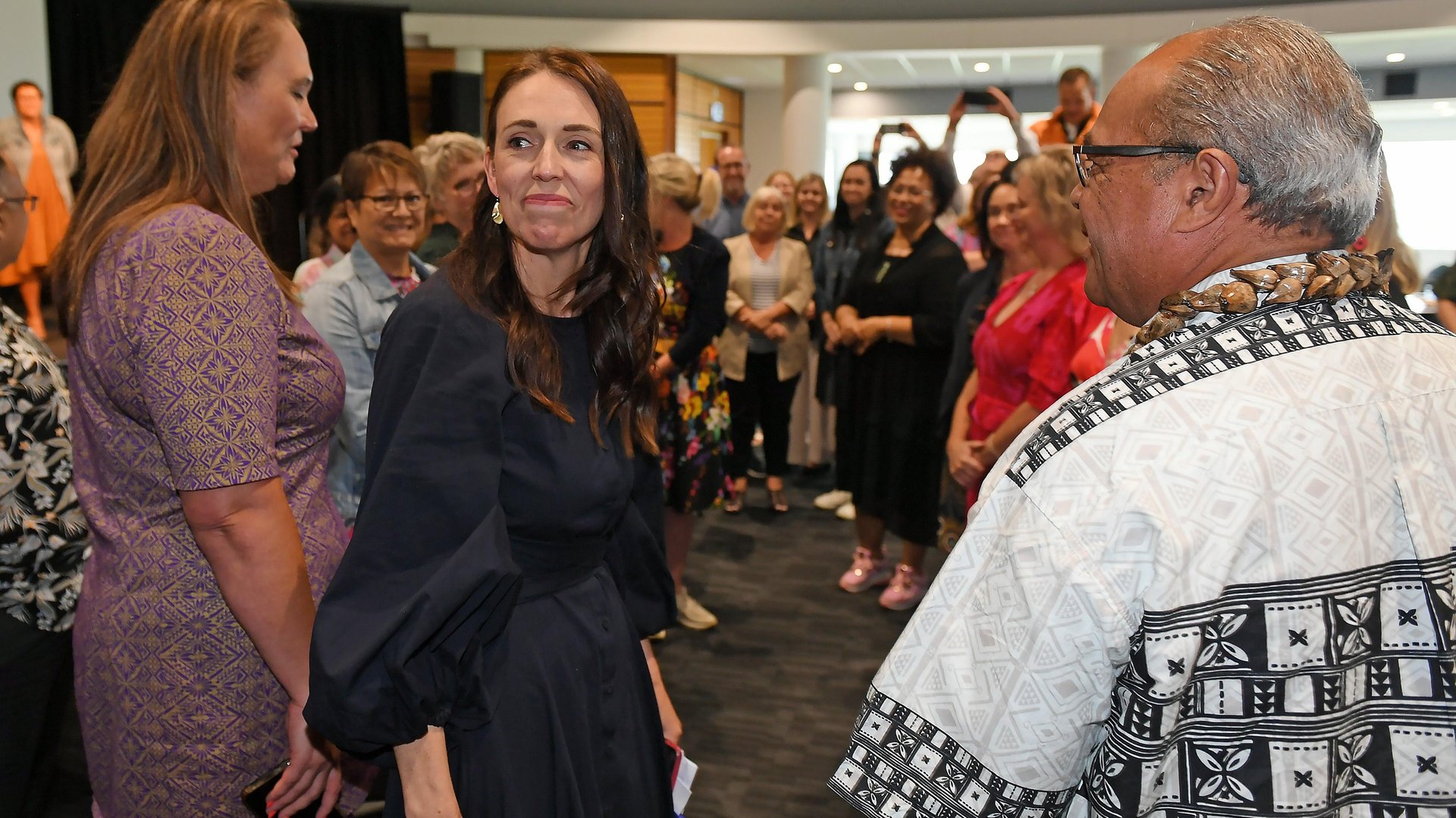New Zealand’s Jacinda Ardern gave a characteristically candid resignation speech
New Zealand's Labour Party needs to elect a successor to serve until the Oct. 14 general elections

After nearly six years at the helm, New Zealand’s prime minister is running out of fuel to keep going.
In a move that shocked the world, Jacinda Ardern announced her resignation today (Jan. 19). Giving rhetorical hyperboles, stale figures of speech, and famous quotes that are typical of political speeches (think Liz Truss) a rest, Ardern delivered her thoughts in her trademark direct, honest, and candid fashion.
“With holding such a privileged role comes responsibility, including the responsibility to know when you’re the right person to lead, and also when you’re not,” she said at the party’s annual caucus meeting. “Politicians are human. We give all that we can, for as long as we can, and then it’s time. And for me, it’s time.”
The prime minister who took on challenges ranging from a once-in-a-century pandemic to a domestic terrorist attack, also gave birth, breastfed, and cared for her child—even brought her to the UN—during her time in power. Her leadership style has often received praised for being determined and affirmative while also showing vulnerability and empathy.
Highlights of Jacinda Ardern’s prime ministership
🦠 Ardern took a decisive approach to the covid pandemic that prioritized keeping contagion and deaths from the virus as low as possible. For the first year and a half of the pandemic, that strategy was effective in achieving one of the lowest covid death rates in the world, but it eventually faced dissatisfaction and protests which, at times, led to clashes with the police. Ardern, who took a 20% pay cut for six months to show solidarity with struggling workers during the pandemic, has ordered an inquiry into her government’s response to the crisis to better prepare for the next pandemic.
👧 She has taken steps to reduce child poverty, including setting up a program that provides a million free meals at school each week to fight food insecurity.
🏠 The Ardern government attempted to tackle the homelessness and housing crisis by promising to build out 18,000 new housing provisions by 2024, among other things.
🍃 Under Ardern, New Zealand has increased its focus on fighting climate change.
🕌 In the aftermath of the 2019 domestic terror attack where a white supremacist killed 51 Muslim worshippers, she showed empathy with mourners, wearing a hijab to show respect, while also pushing for policy changes, tightening gun laws.
🗿In 2018, Ardern wore a Maori coat to Buckingham Palace and, in 2022, she issued a historic apology and $155 million in redress to the indigenous tribe. She’s also made Matarika a Maori national holiday.
🌋 Ardern’s government launched a probe into the 2019 disaster where nearly two dozen people were killed and almost as many severely injured when the White Island volcano erupted.
🇳🇿 A key educational reform in 2021 provided schools with a uniform curriculum about the country’s history, which is mandatory for all students in years 1 through 10.
🚬 Towards the end of 2022, the Ardern government unveiled a radical plan to make the country smoke-free by banning cigarette sales for anyone born after 2008.
Why Jacinda Ardern is resigning, in her own words
“I have given my absolute all to being Prime Minister but it has also taken a lot out of me. You cannot and should not do the job unless you have a full tank, plus a bit in reserve for those unplanned and unexpected challenges that inevitably come along. Having reflected over summer I know I no longer have that bit extra in the tank to do the job justice. It’s that simple.” —Jacinda Ardern’s resignation speech
Fun fact: The world’s youngest female leader
Ardern, a former DJ and lapsed mormon, became the world’s youngest female head of government at age 37 when she was appointed New Zealand’s 40th prime minister in 2017 (Finland’s Sanna Marin claimed that record in 2019 when she was elected prime minister at 34). Ardern also became only the second head of government ever to give birth while in office, after Pakistan’s Benazir Bhutto in 1990.
Who will be New Zealand’s next prime minister?
The Labour Caucus will vote on a new leader on Jan. 22. If no individual within the caucus can garner two-thirds of the votes, the leadership contest will go to the wider Labour membership. In any event, the prime minister has recommended the process be concluded by Feb. 7, the day she intends to formally step down.
Arden will continue as a member of parliament until April but come general elections on Oct. 14, 2023, she will not seek re-election. That leaves a void considering polls still rank Ardern as the country’s preferred prime minister despite her popularity falling from a year ago. According to political commentator Ben Thomas, there’s no clear successor in sight.
However, Ardern believes that it’s time for a change. “I’m not leaving because I believe we can’t win the election, but because I believe Labour can and will win it,” she said. “We need a fresh set of shoulders for the challenges of both this year and the next three.”
For her post-government future, Ardern plans to shift her attention to her daughter and fiancé Clarke Gayford: “For Neve, Mom is looking forward to being there when you start school this year, and to Clarke, let’s finally get married,” she said.
Related stories
🏖️ New Zealand’s image as a remote paradise hides a troubling reality
